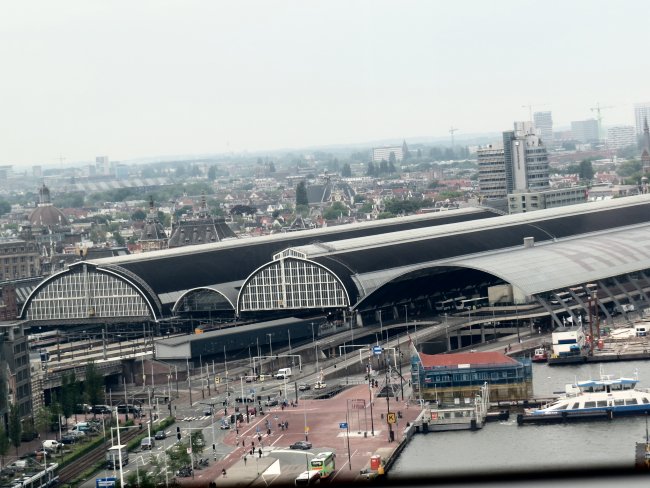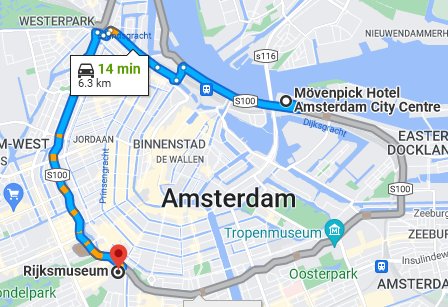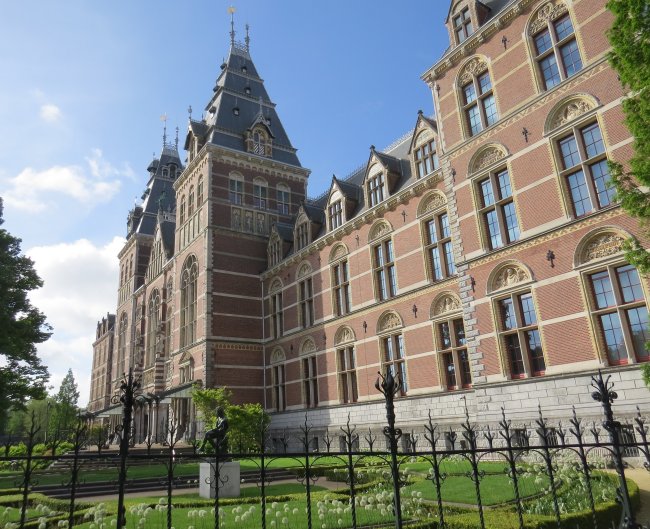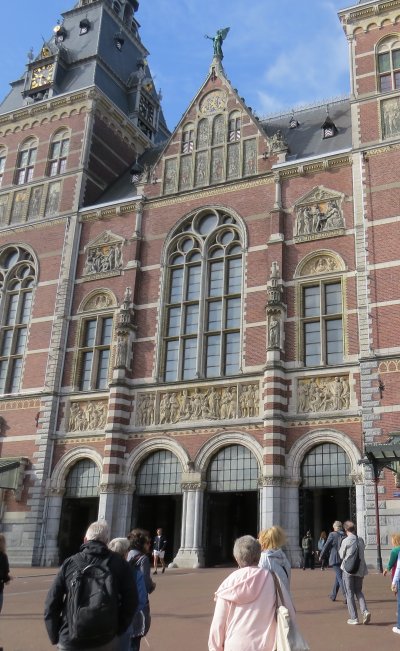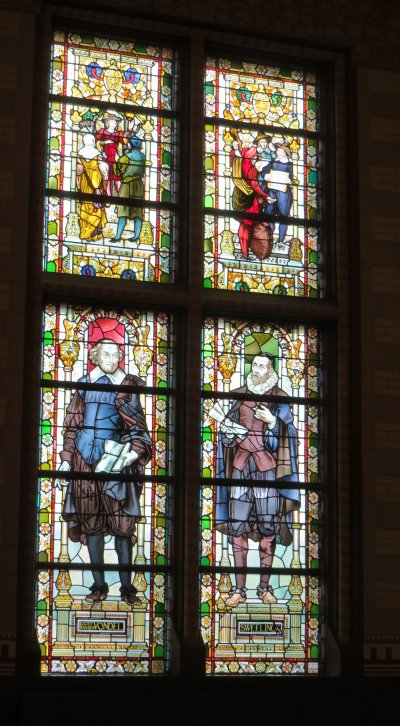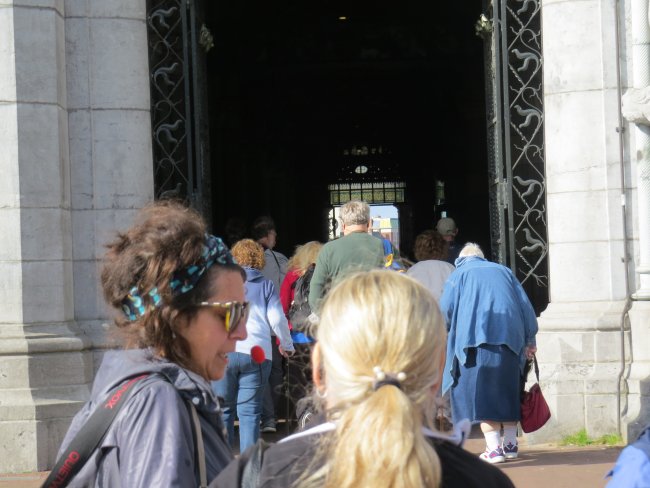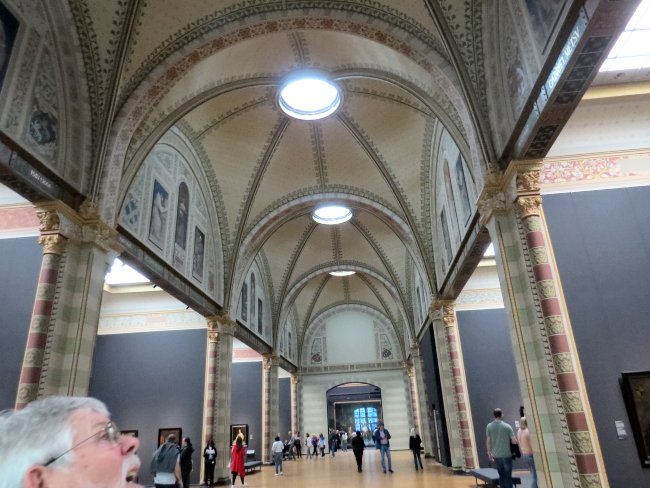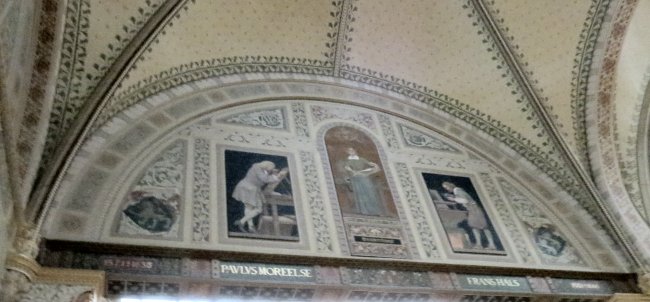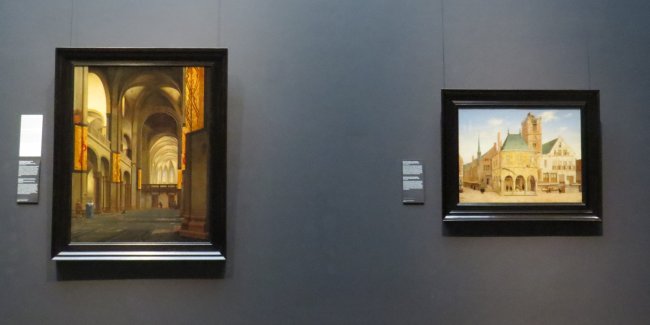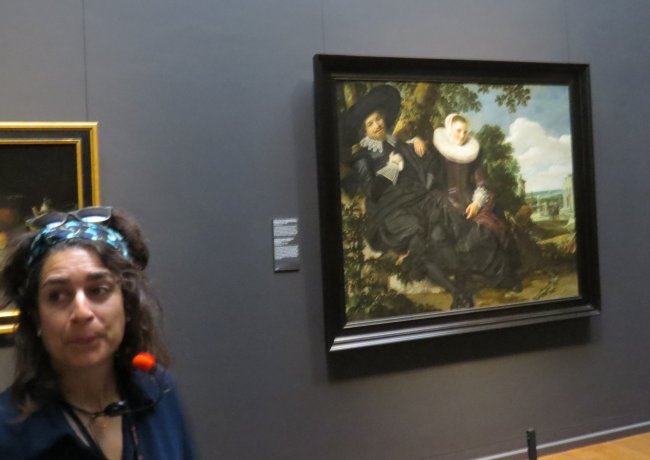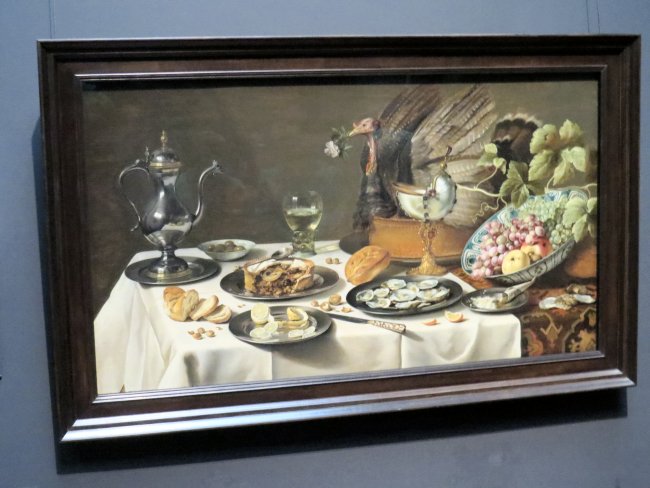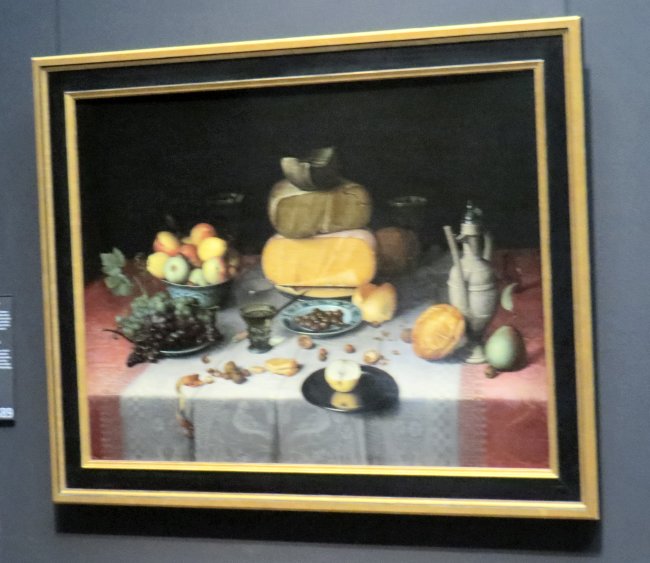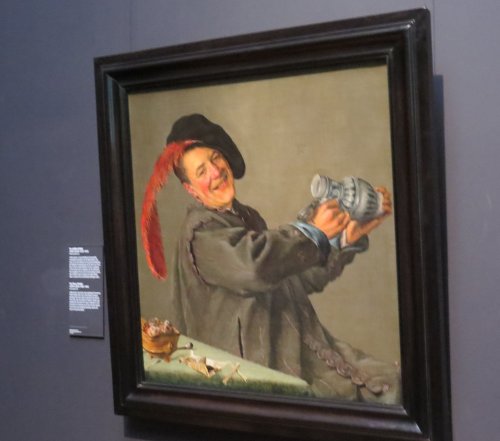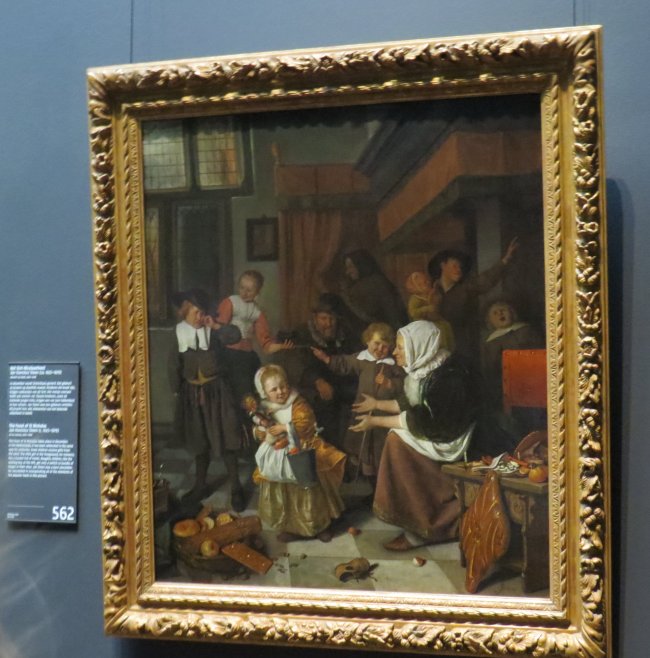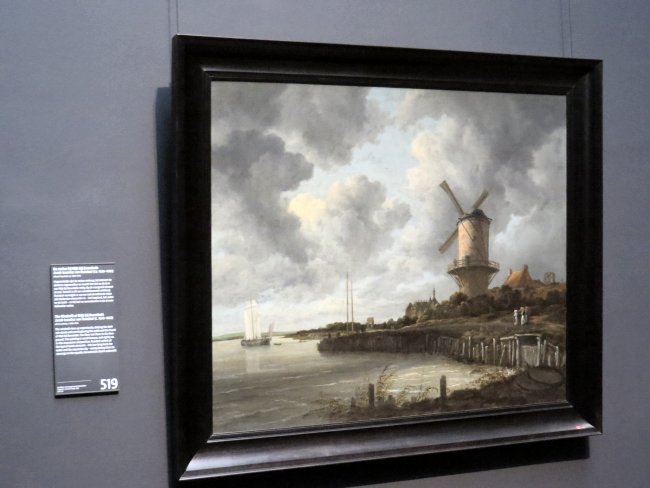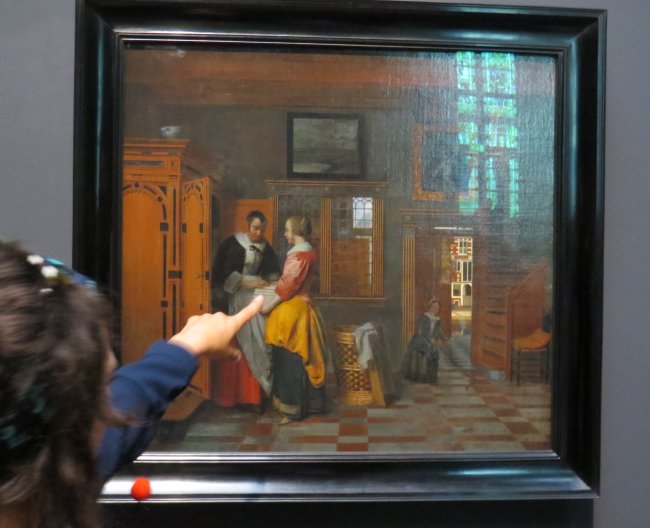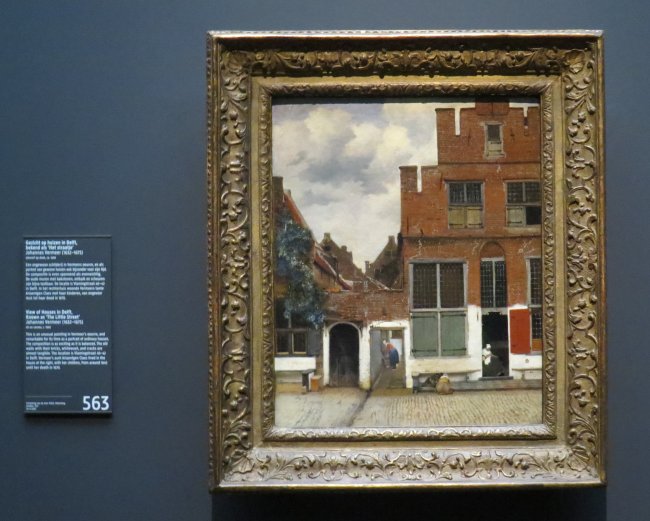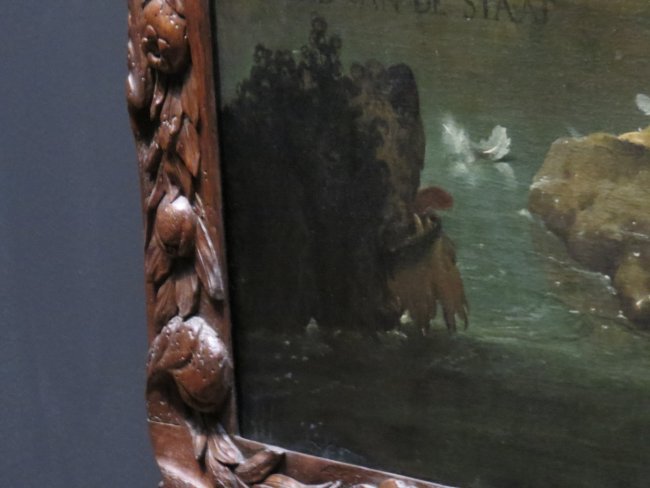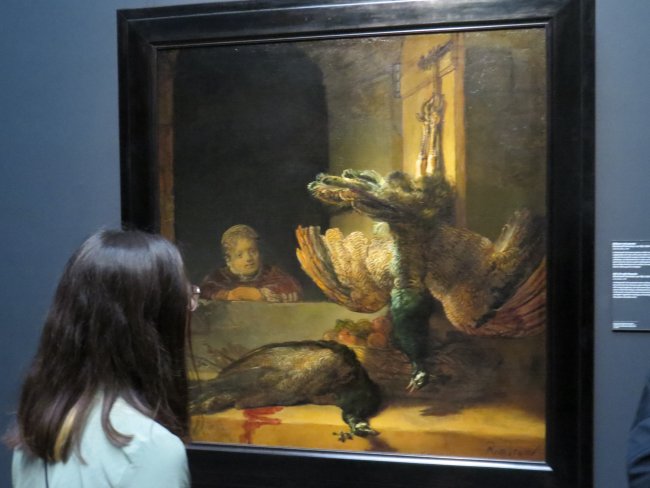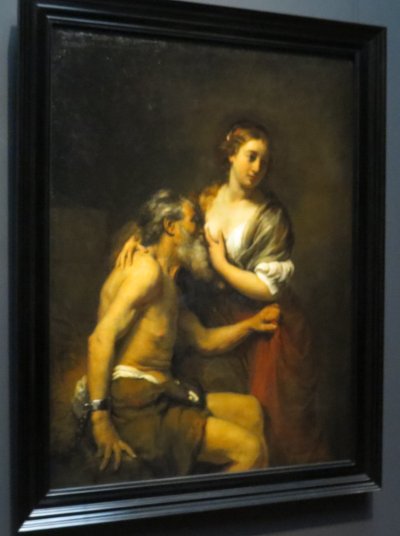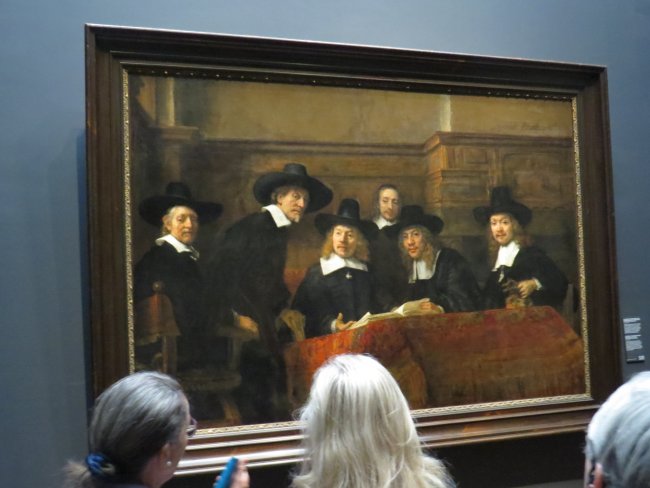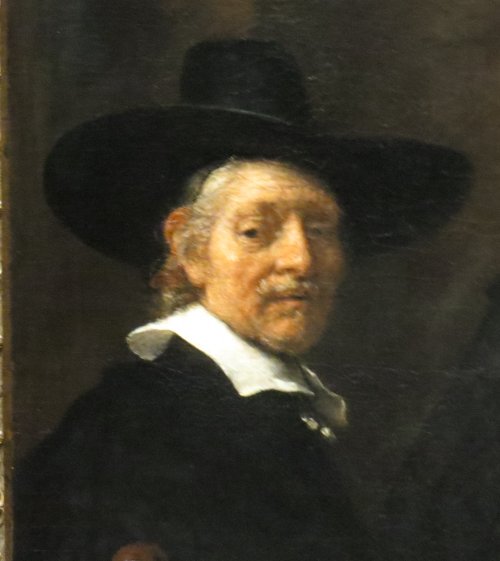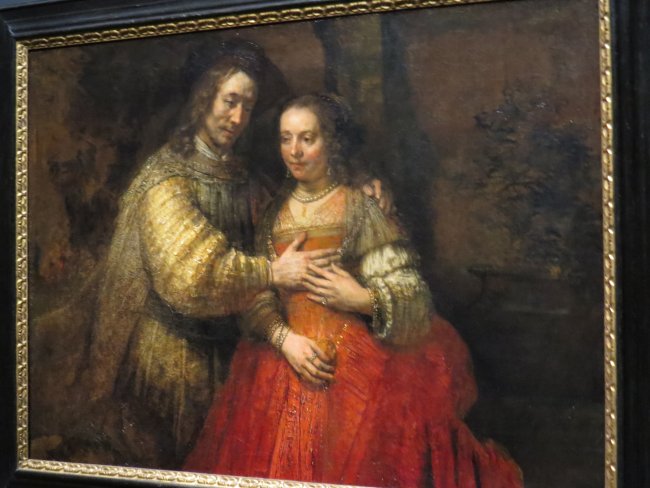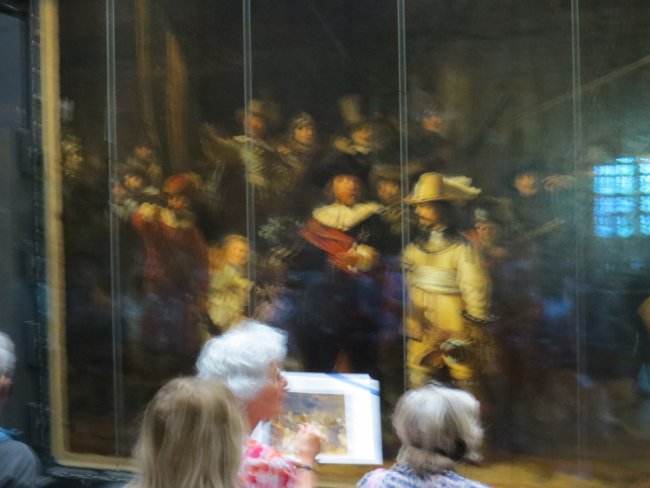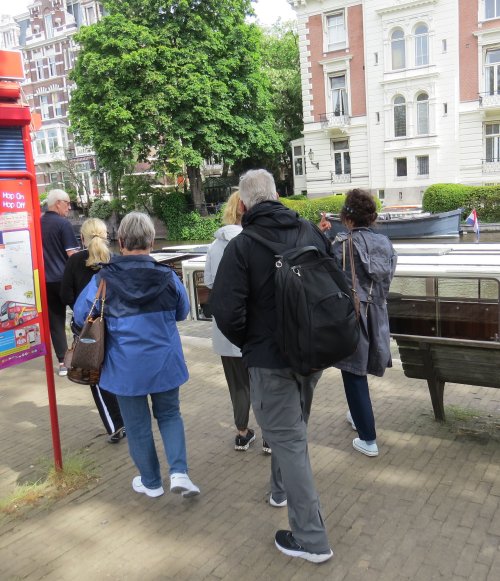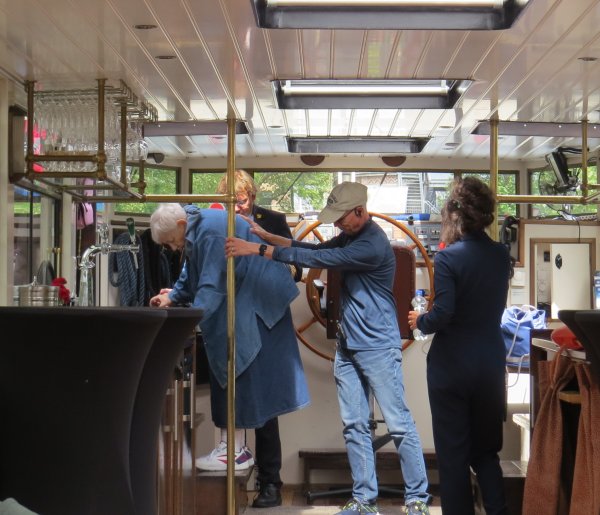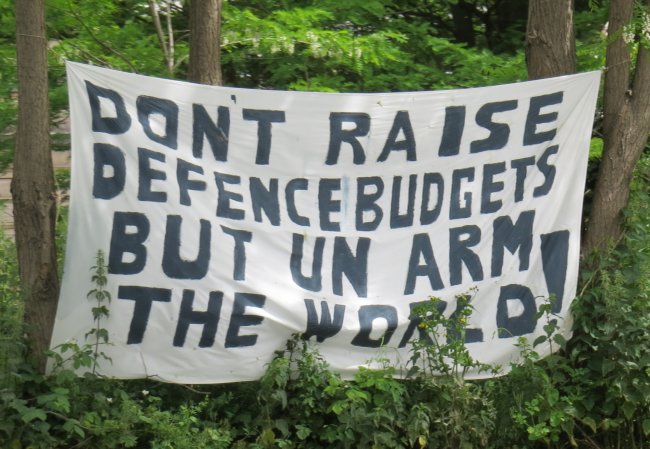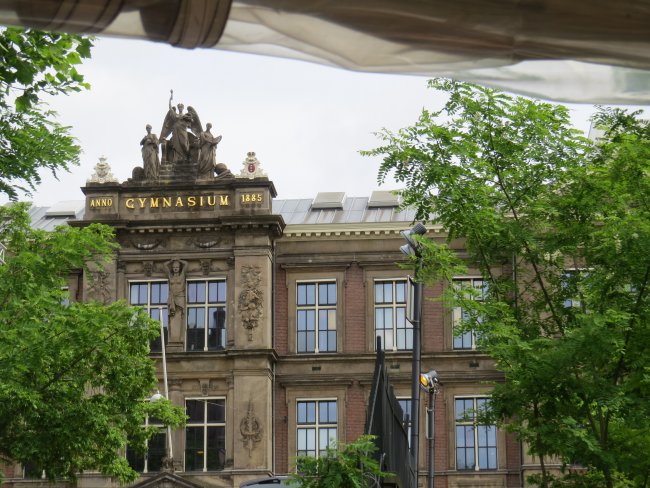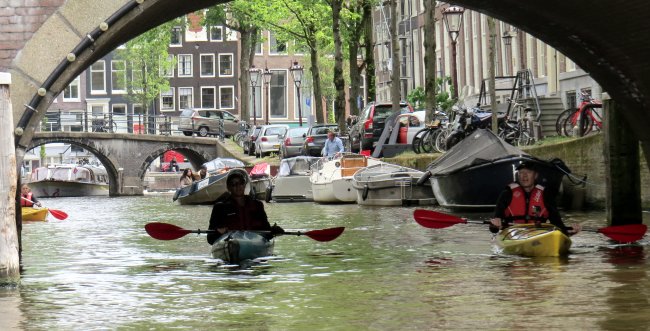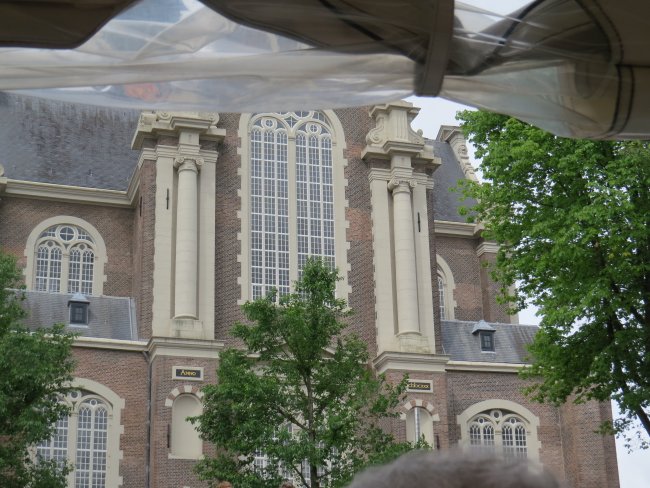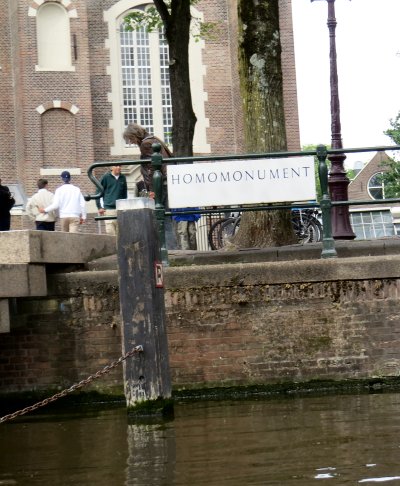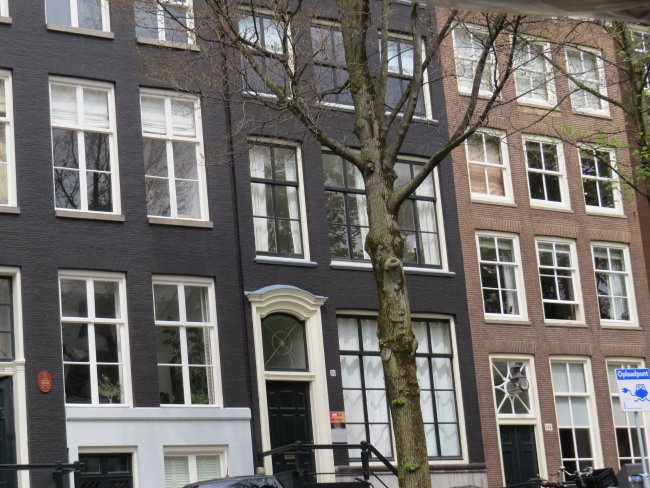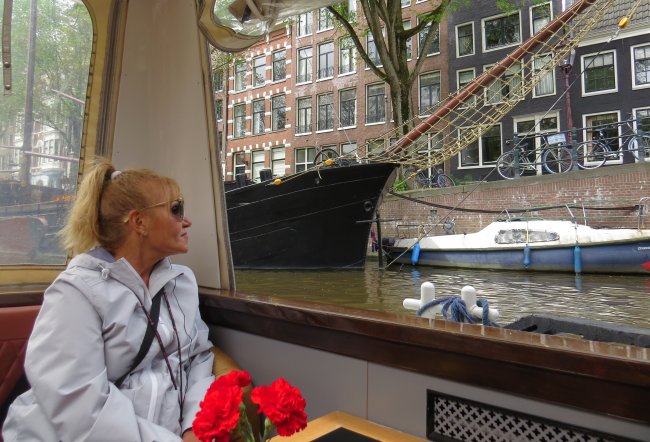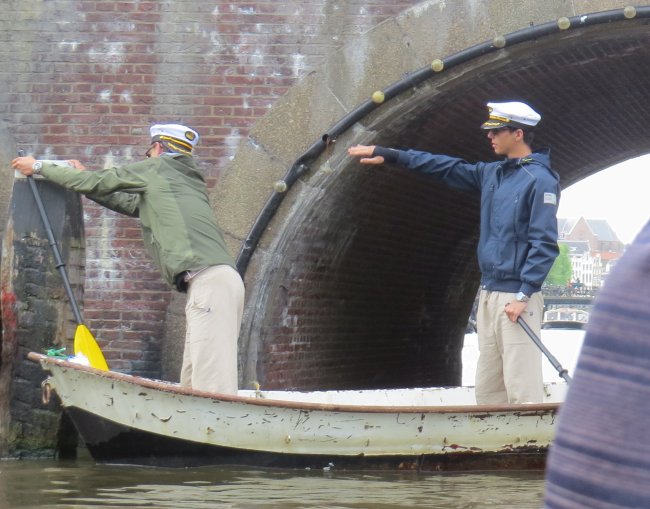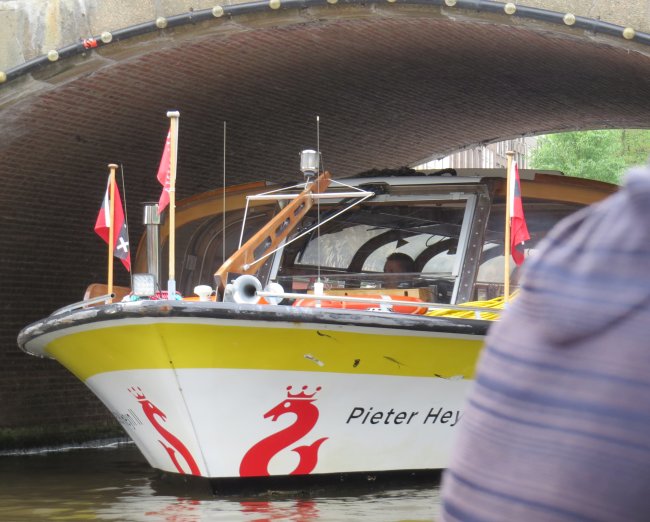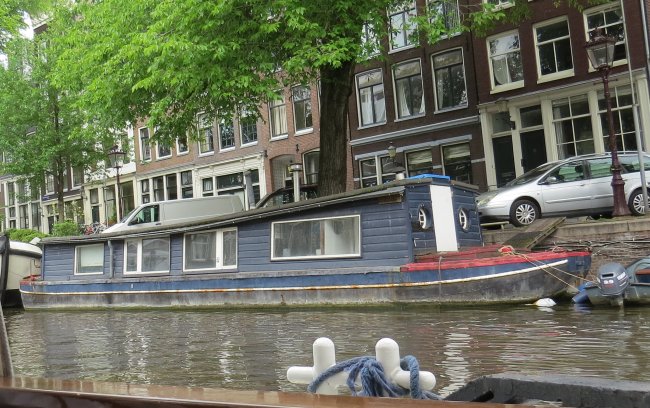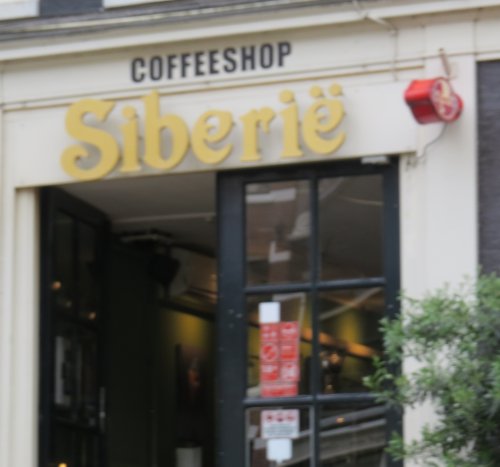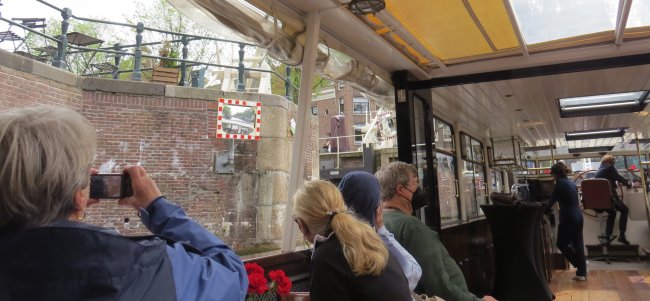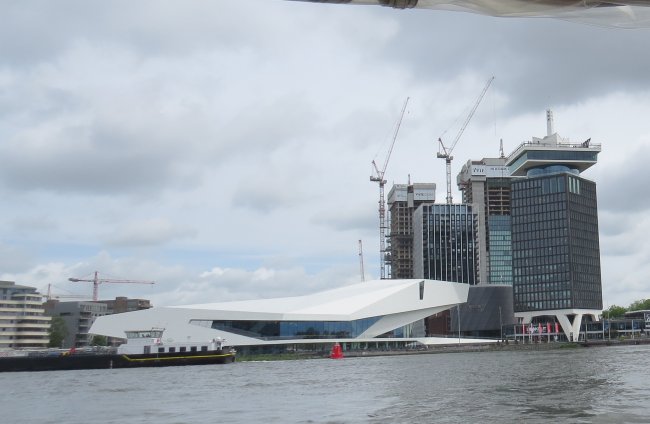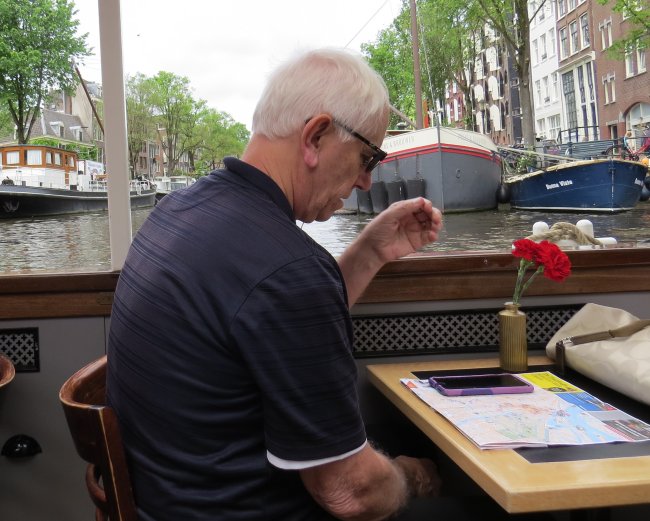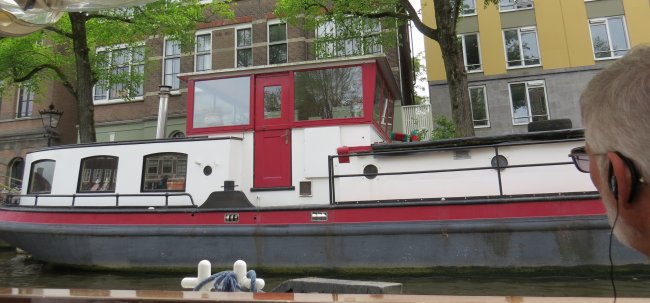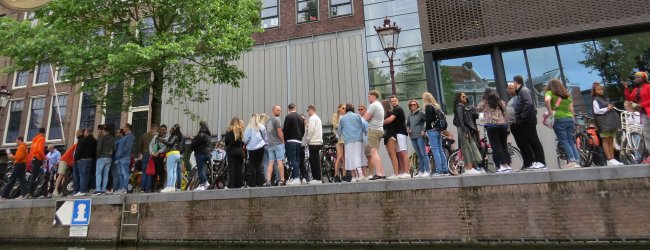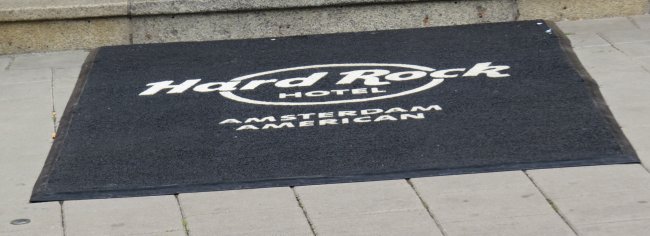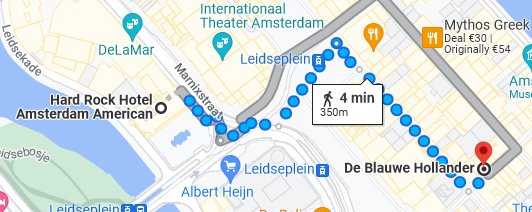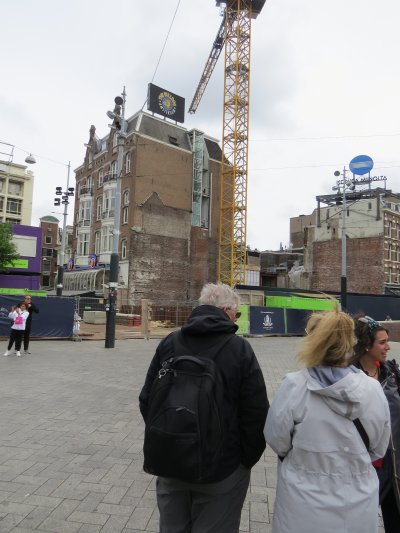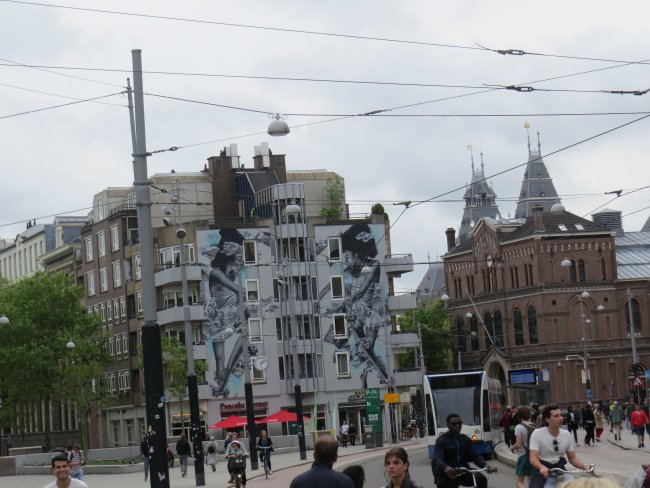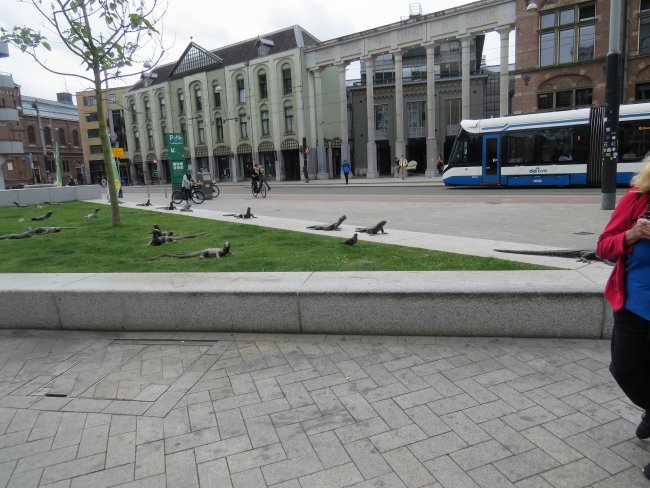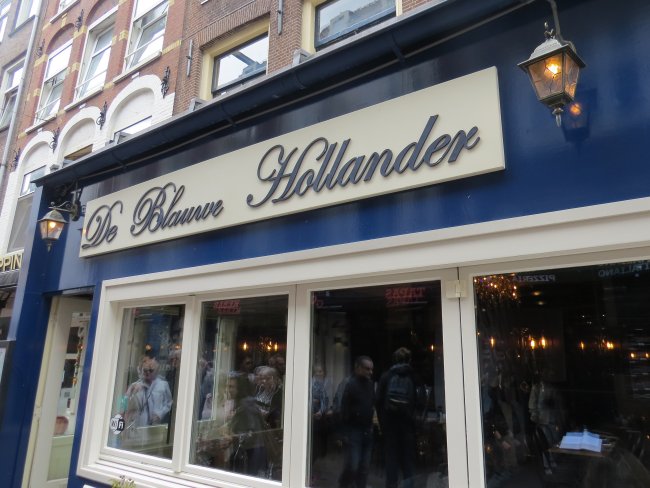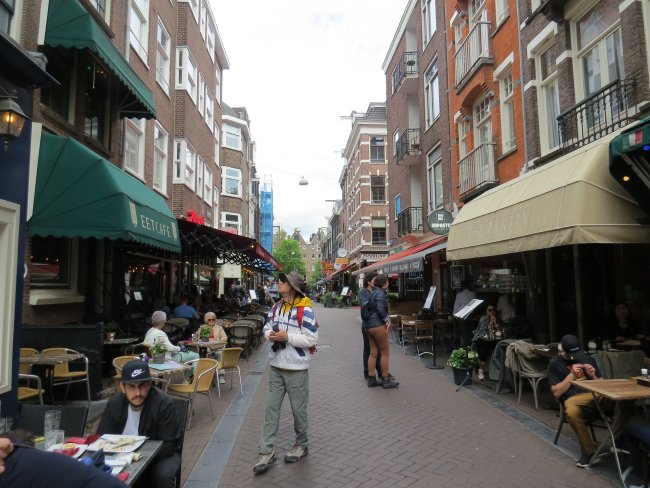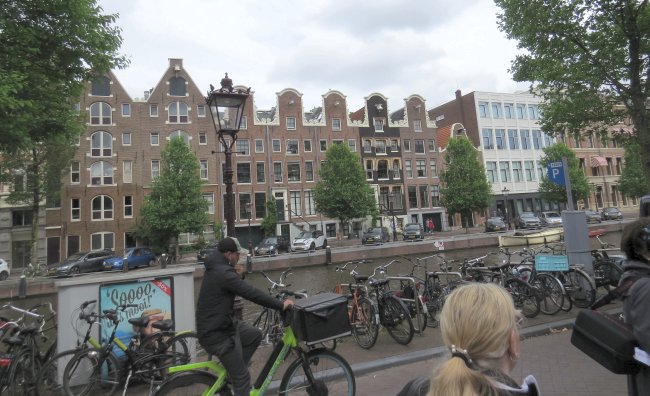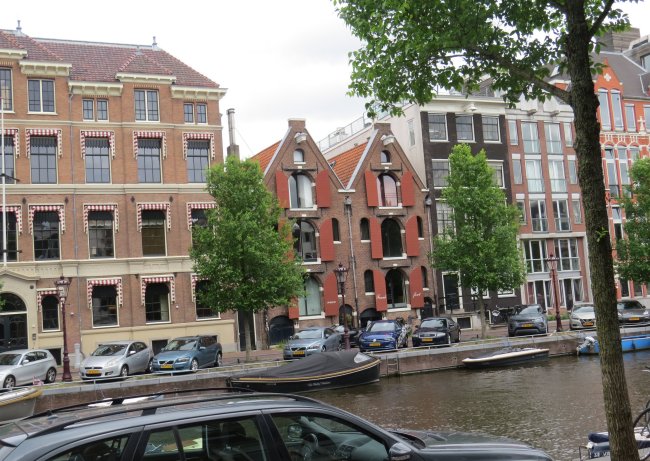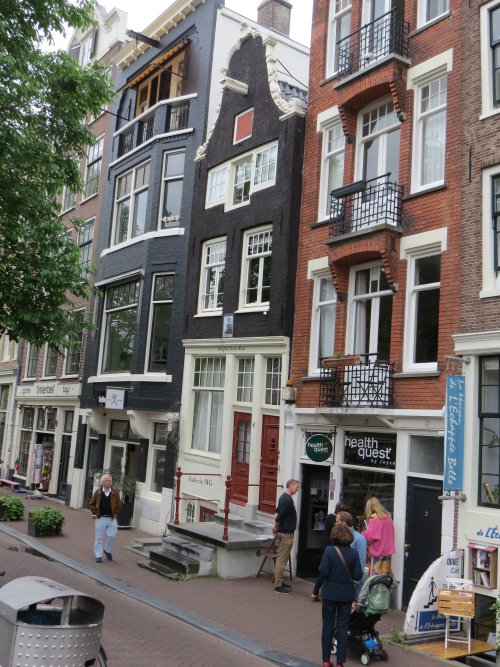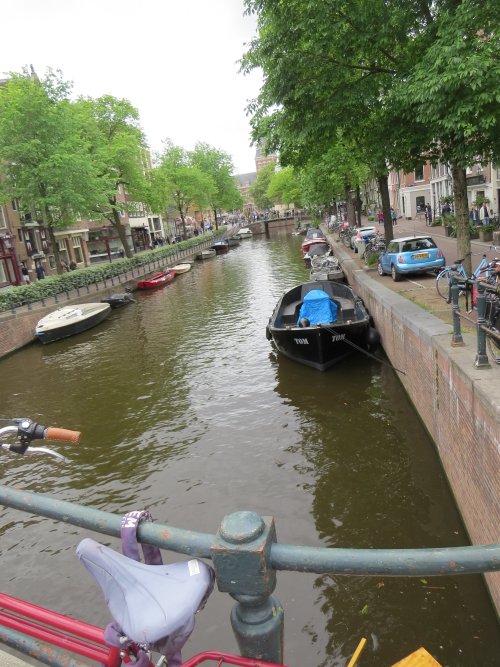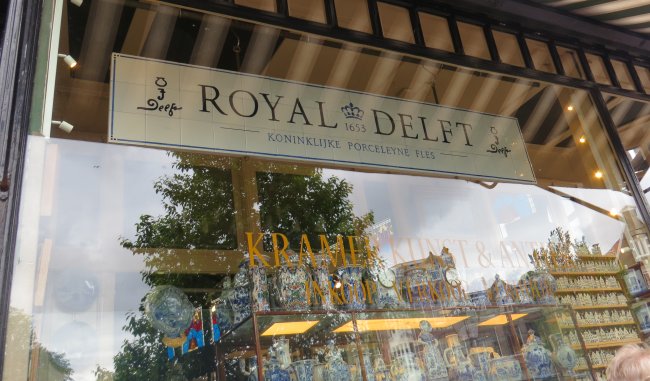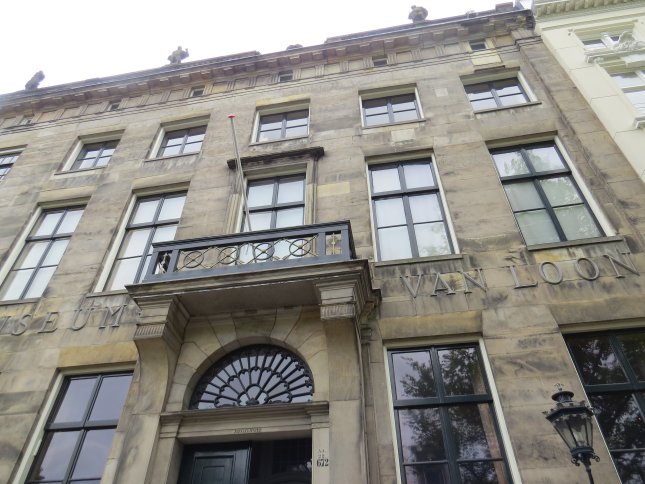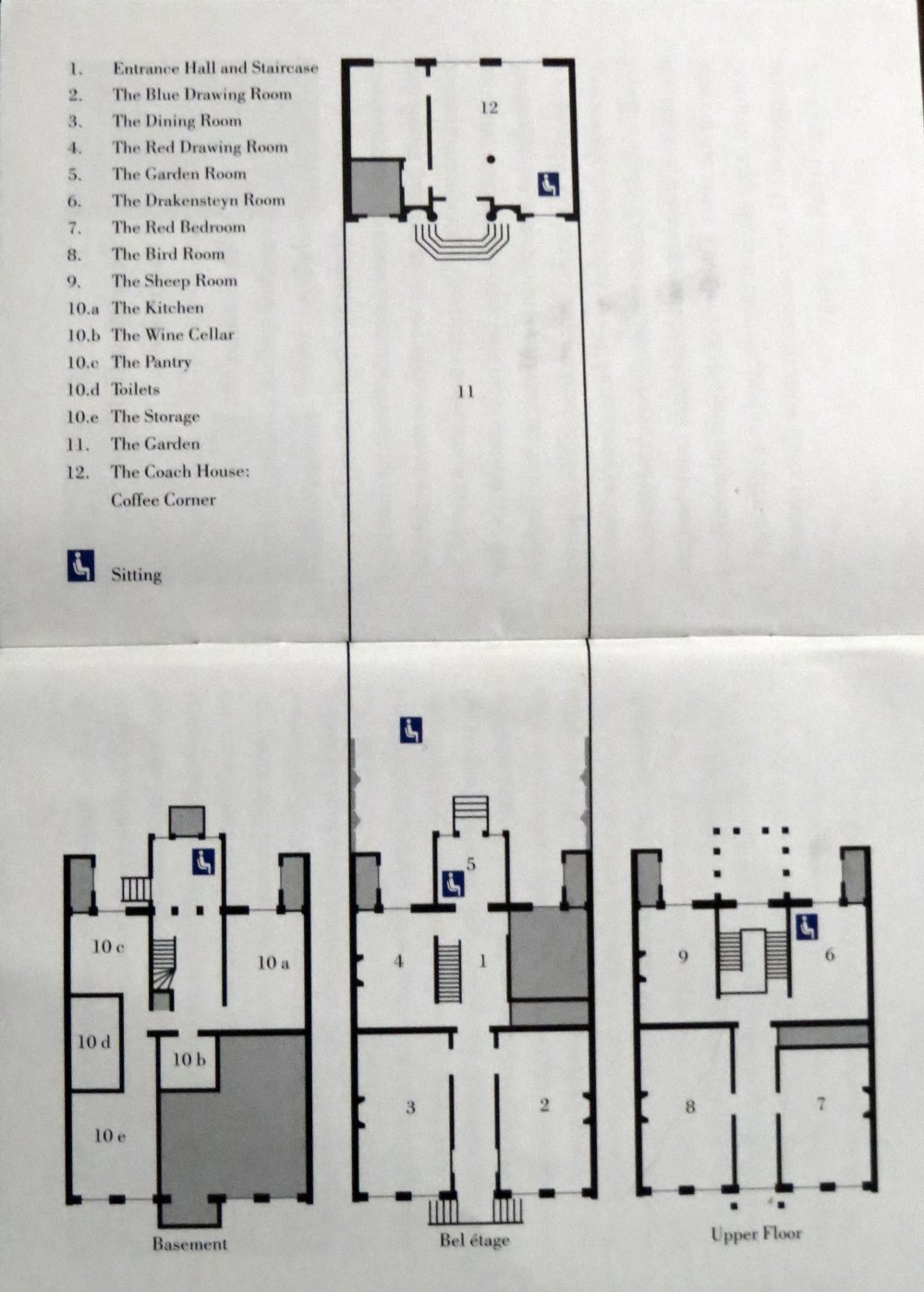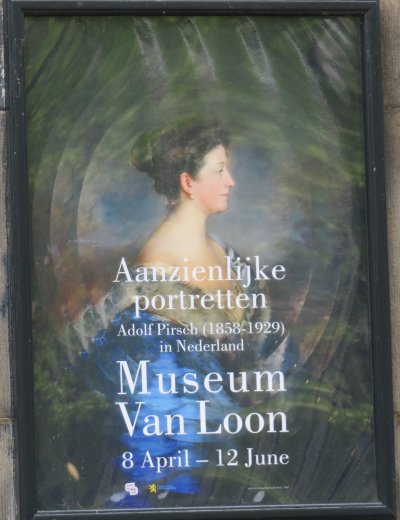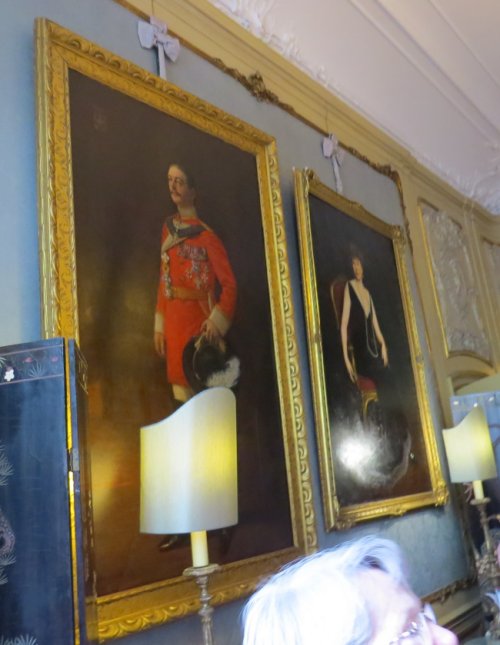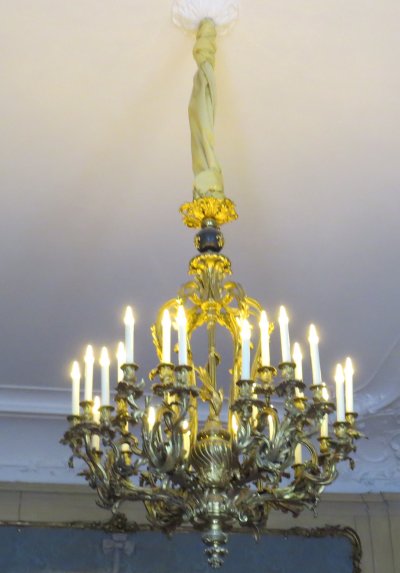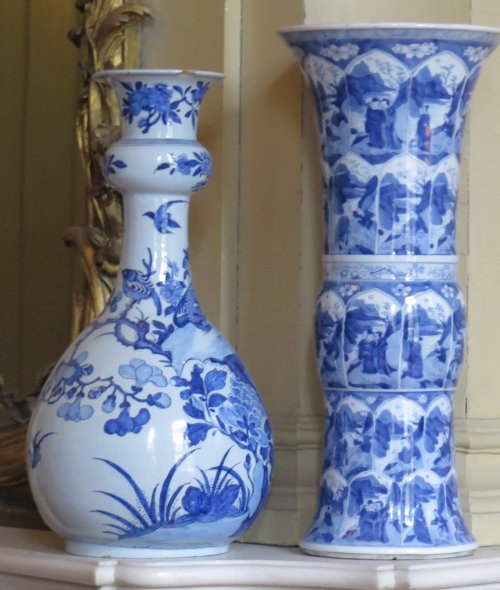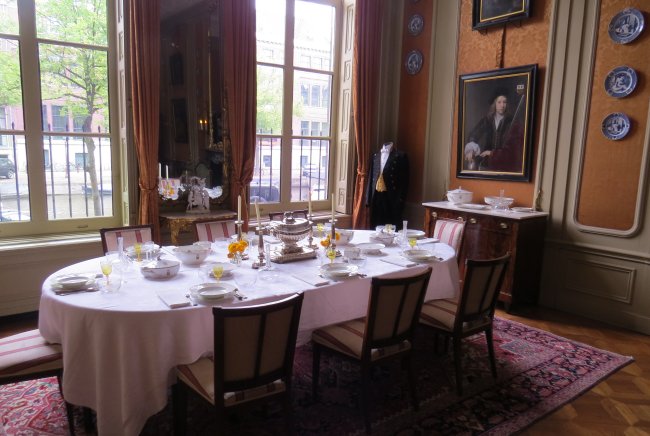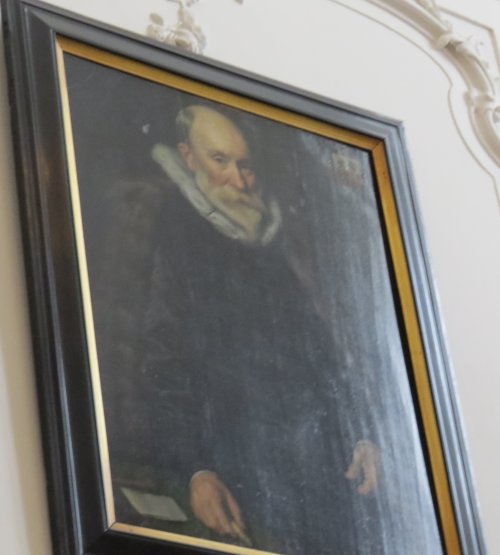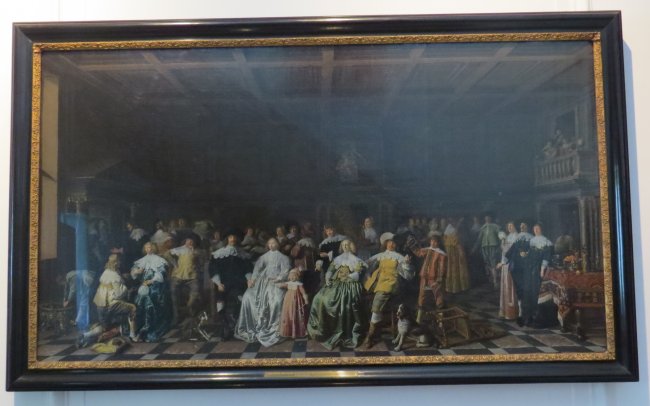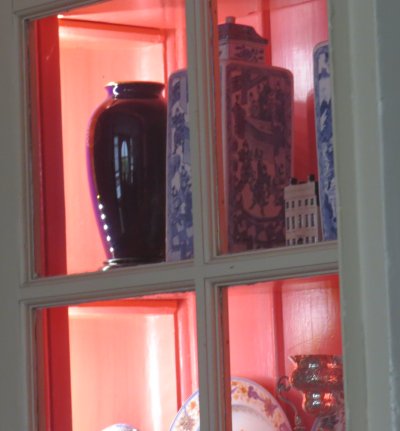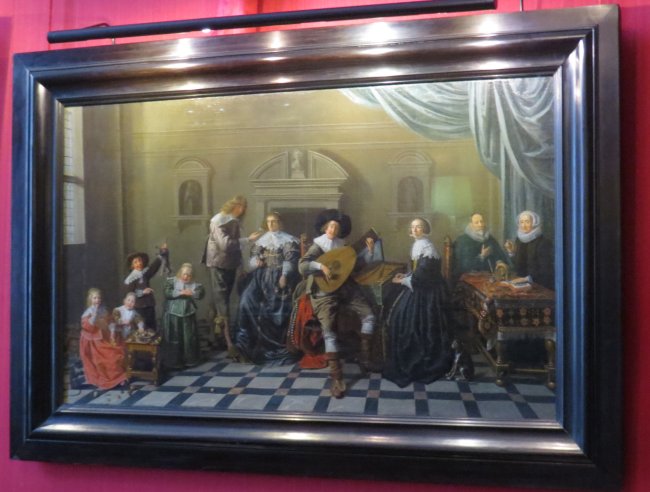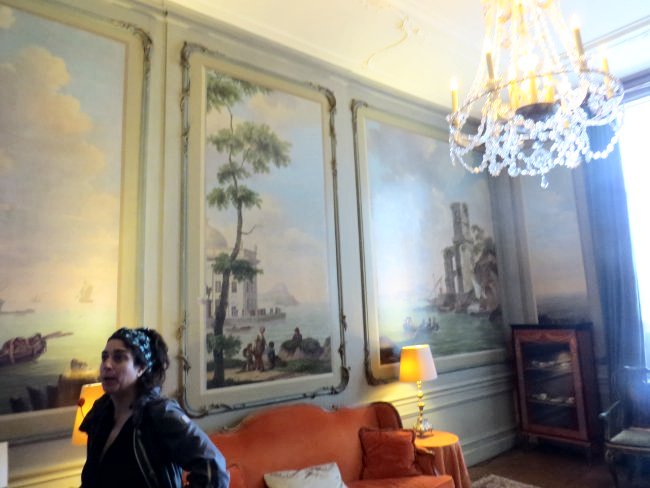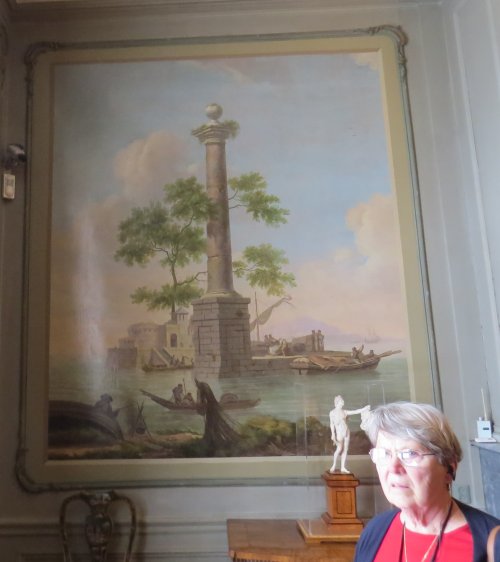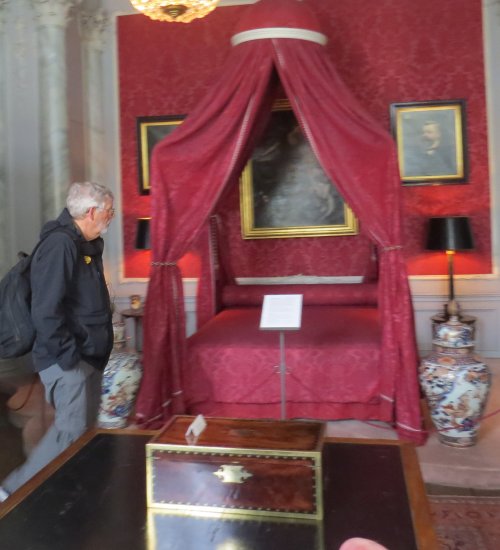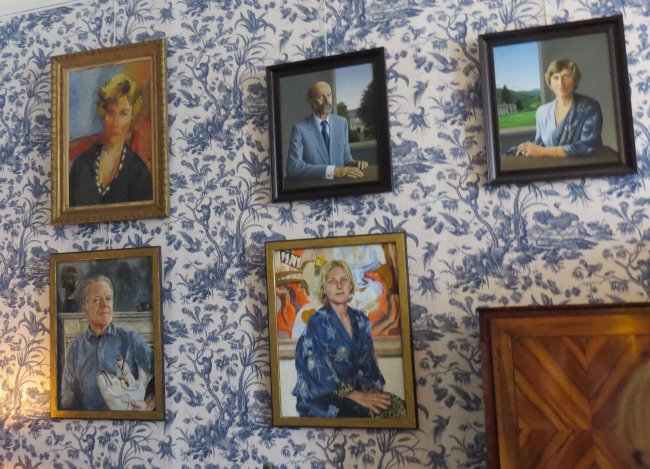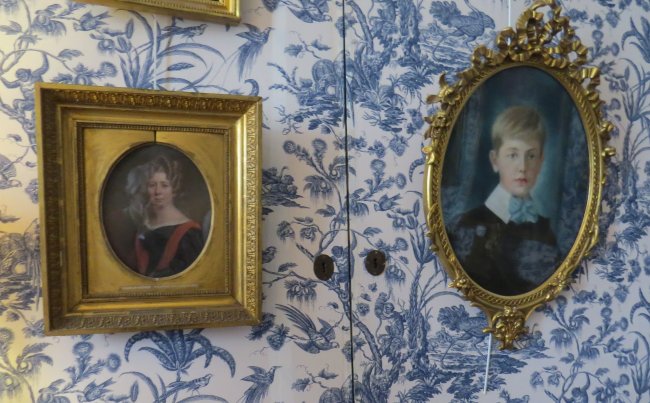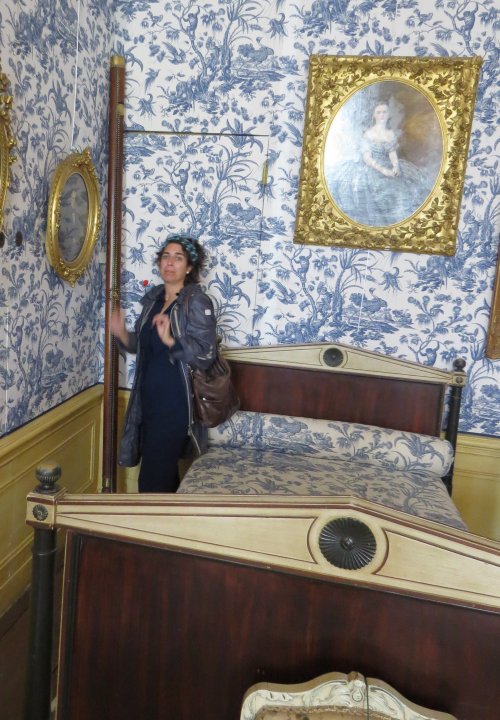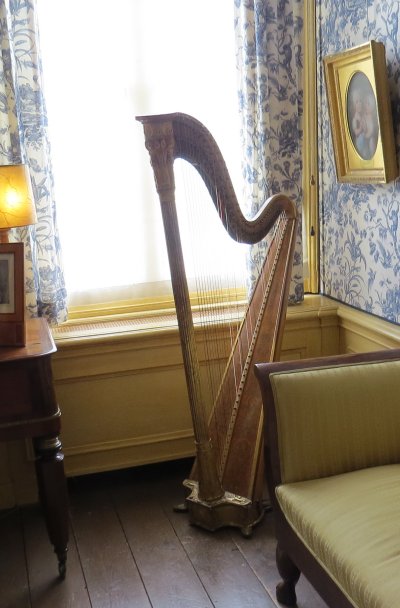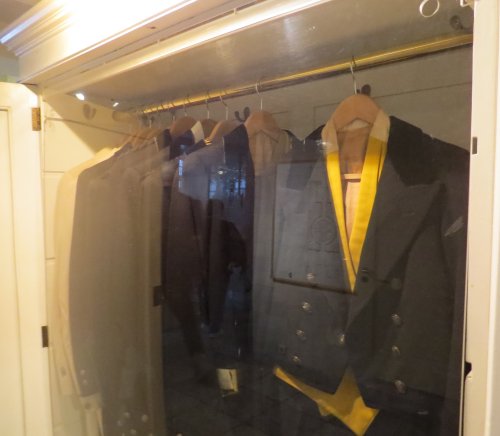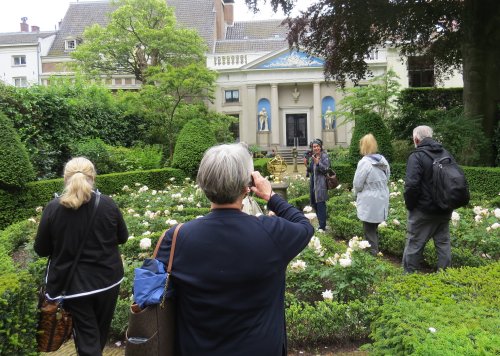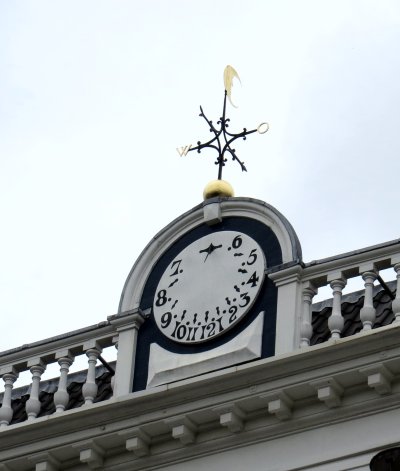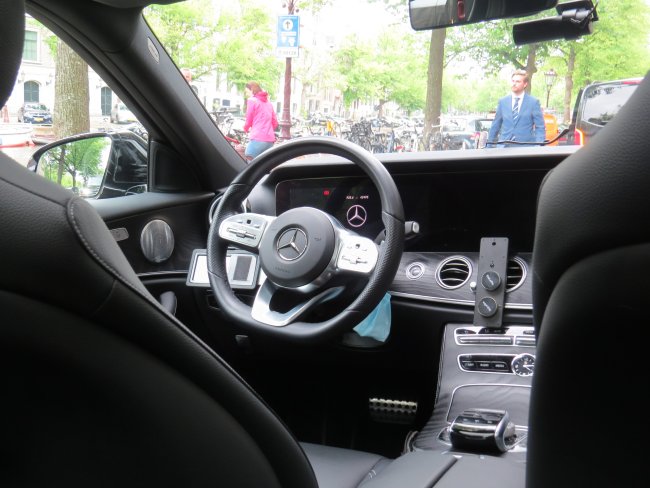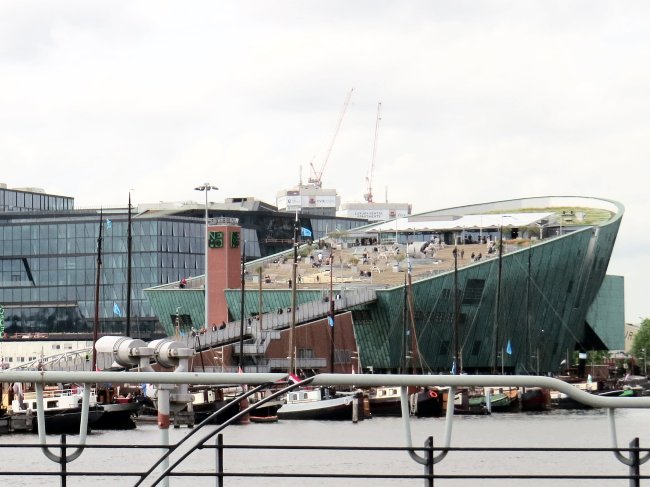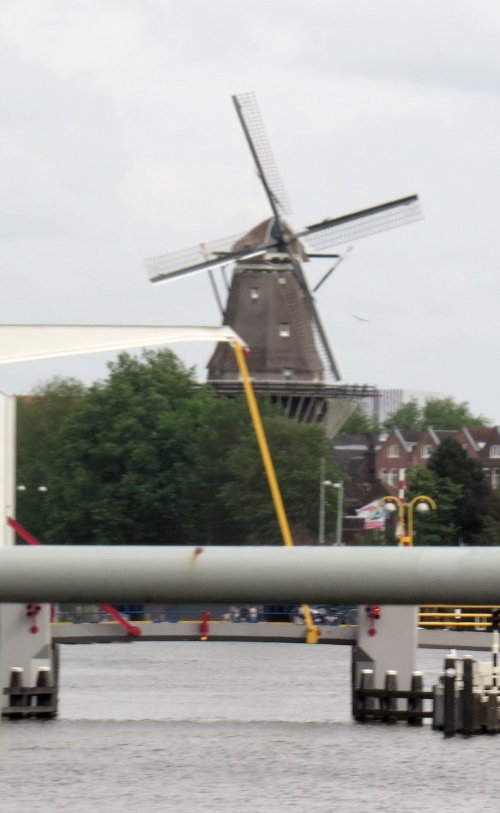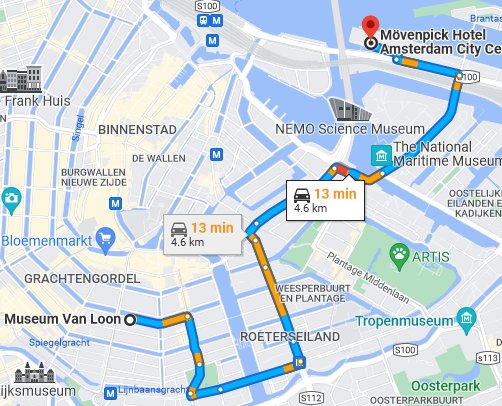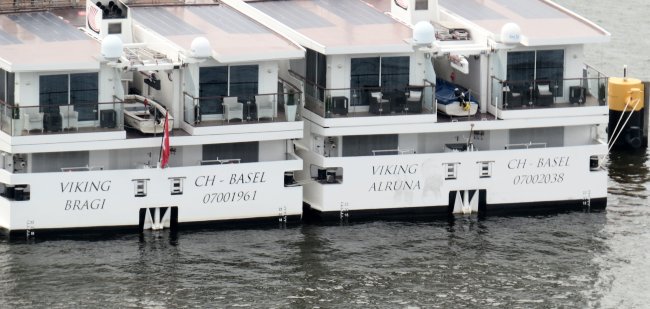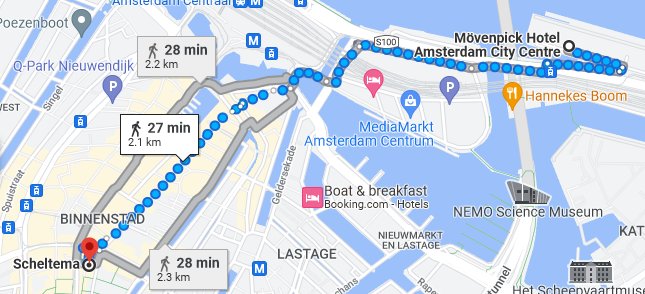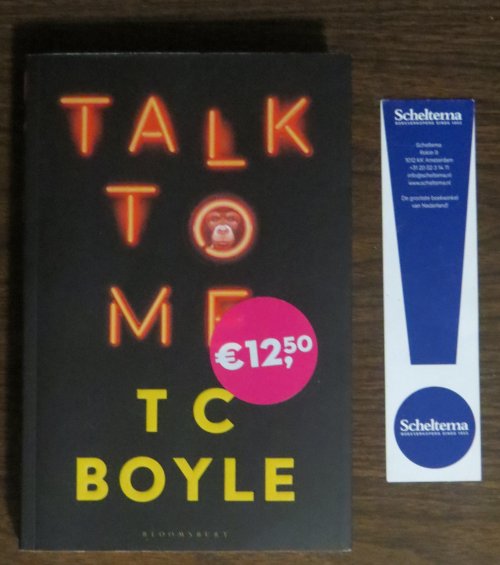The package cost $269, which may explain why no one else from the Viking Vili post-extension group had signed up. However, my experience on this cruise indicated that the more expensive excursions had been far more enjoyable and more educational than the free and cheaper ones. I had little idea what we were in for, but I was pretty excited about it.

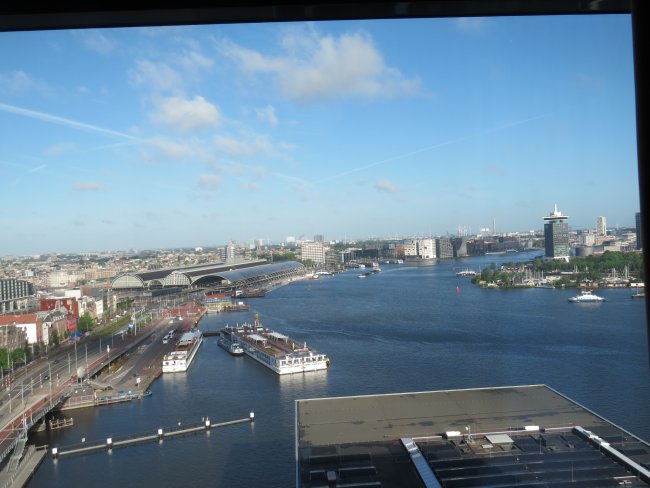
Before the excursion : I woke up at 6 a.m. Now that it was almost time to return home, I had finally adjusted to Central European Time. I felt pretty good; the bed was extremely comfortable. My legs did not get cramps, and my back felt fine when I got out of bed.
I looked out the window at the harbor. The view was even more spectacular in the bright morning sunlight. Viking Vili was no longer there. I could see two ships, Viking Bragi and Viking Alruna. I could not read the names directly, but they were clear enough when I zoomed in with the Canon.Everything in the bathroom functioned correctly. Even the stopper in the sink worked, which is rare for a hotel room.
Breakfast was similar the to the buffet arrangement on Viking Vili, but the eggs were hard-boiled. I took two of them, but I had a very difficult time peeling them.I sat by myself, but I overheard two couples talking at a nearby table. One was from the Viking Vili. The other couple, who were scheduled to leave on a Viking cruise on Monday, were shocked to hear that thirty-four people had been escorted off of our ship. The guy was questioning his decision not to buy the trip insurance.
I took the elevator to the lobby and went to the Viking desk. Hana informed me that my transfer to the airport on Sunday has been arranged. The Covid test was at 8:00. She told me that I would go first so that I could leave for the excursion on time.
The test was not a big deal—five circular swabs in each nostril. The guy who administered it said that the results would be ready in an hour, but the car that was hired to take me to the assembly point for the Golden Age excursion was scheduled to leave at 8:35.
I went up to my room to get my gear for the excursion. It was chilly enough for a jacket. For the first time I also brought my backpack. I had to wait nearly fifteen minutes for an elevator.
The ride to the Rijksmuseum: By the time that I reached the ground floor it was 8:40, and Hana was panicking. She did not know how to contact me to tell me that the driver had arrived. He, on the other hand, was in no hurry. He was, however, confused because he was expecting a couple—Boris and Marty, with whom I had dined early in the voyage. I had a hard time convincing him that I was neither of the people on his list, and my name was not there either. Evidently the people on the Vili had never informed the Viking staff at the hotel that 1) Boris and Marty did not finish the cruise; 2) Sue never started the cruise; and 3) I had purchased the Golden Age excursion while I was on the ship. Hana assured him that I was the only one going.
The driver told me that he needed a name. I tried to spell Wavada for him the way that I usually do: “W, A, V as in victory, A, D as in Delta, A. W-A-V-A-D-A: six letters.” Somehow he got it into his head that my name was Victor. I told him that my first name was Mike. He understood that and was satisfied.The car was a huge Mercedes van or SUV. I entered from the side and sat in the third row. There was at least one more row behind me. I felt somewhat ridiculous.
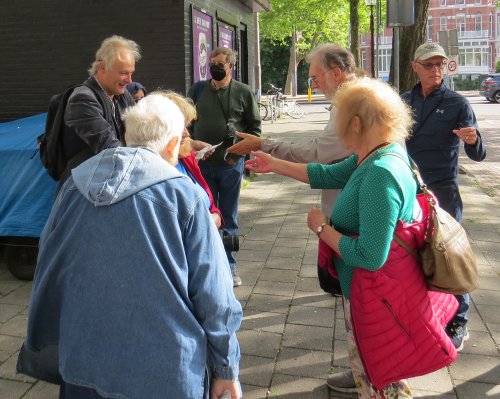
One couple, who I later learned were from California, were on Lorena's list of people who had purchased tickets for the excursion. A driver had been commissioned to transport them from another hotel to the Rijksmuseum, but they were quite late. Lorena called someone and determined that they had been driven to the wrong museum. Lorena was furious about this. I overheard her cursing out the limo company in Dutch.
When the driver's black Mercedes finally arrived on the main road near the Rijksmuseum, he turned onto the driveway where the rest of us were standing, but then he mistakenly made another left turn onto the one-way road that passed in front of the museum.Someone in his car must have noticed our group—before the last turn they had been within twenty or thirty meters of us. The driver made a difficult K-turn on the narrow drive and then drove back (the road was one-way) to where the rest of us were standing. The couple got out, and, after Lorena had given the driver a piece of her mind, we began our tour. The group was divided in two. Seven were in Lorena's group and eight in Bert's.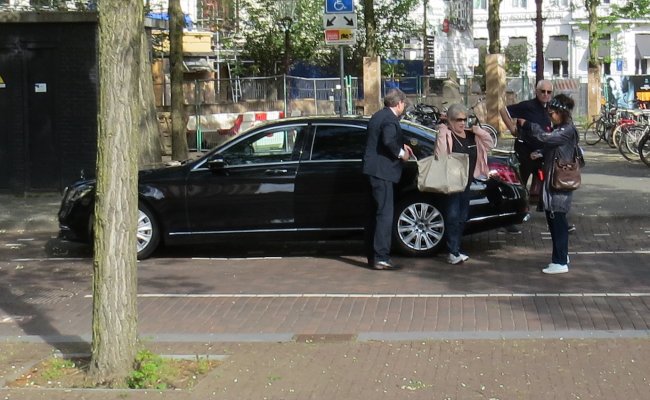
All of the other tour members were on a pre-tour extension or the first day of their Viking cruise. So, this woman was facing a week or more of touring. I did not see how she could possibly handle it. I felt sorry for her and especially for her companion—if she was her companion.
The guided tour of the Rijksmuseum: No one else in our group wore a mask. One couple did in Bert's group. Both guides used QuietVoxes. I brought my own earpiece.
Lorena explained that the architect of the Rijksmuseum was Pierre Cuypers (rhymes with pipers). He also had designed the Centraal Station and many churches. The museum was faced toward the station at a distance of 2.5 kilometers. The entrance to the museum had recently been redone at the direction of two Spanish architects, Antonio Cruz and Antonio Ortiz. It took ten years and cost €375 million.
The new structure allowed walkers and bikers to pass through the building. The atrium was BENEATH the ground-level passage, and ABOVE it was the first floor, which contained both the Great Hall and the Gallery of Honor, the home of the seventeenth century Dutch masterpieces. These were the only two floors that we visited, and we actually saw a small portion of it. One could easily spend two or three days enjoying the museum and its grounds.
We entered the building and took the elevator down to the atrium. There were more delays in this process. Apparently Lorena and Bert were not accustomed to working together. While Lorena got our tickets those who needed to use the restrooms did so. Then we took the elevator up two stories and entered the Great Hall.
The Great Hall boasted three very large stained-glass windows and two smaller ones. The three large ones depicted painting (including a pane devoted to Rembrandt in the lower right corner), architecture, and sculpture. Somehow I neglected to take a photo of the sculpture window. The other two windows celebrated philosophers and writers/composers. Van den Vondel wrote poetry and plays. Sweelinck composed music.
It was apparent that the architect wanted to convey the impression that this building was equivalent to a church for worship of the arts.
The Gallery of Honor was directly over the passageway. It stretched from the Great Hall almost to the back of the building. A long hallway led to a large room devoted to Rembrandt's The Night Watch.
On either side of the hallway were open exhibition rooms featuring the seventeenth-century Dutch painters who had been deemed worthy of the honor. They were arranged in roughly chronological order. As the morning progressed the areas around the paintings became more and more crowded. This made it difficult for Lorena to emphasize important minutiae and for me to take unobstructed head-on photos.
By the time that I started working on this webpage I had forgotten most of what Lorena told us. Fortunately I found the Rijksmuseum's wonderful website, complete with photos, videos, and commentary—in English.
The works of the early seventeenth century emphasized simplicity and photographic-level accuracy. People were portrayed as upright and serious. No one showed indications of financial success or personal interests. Above all, they never smiled or laughed.
Frans Hals took a very different approach in Married Couple in a Garden.
Lorena skillfully drew our attention to the details in the Married Couple that made it clear that both participants seemed relaxed and happy with their status as newlyweds. She did not explain why in the still lifes there always seemed to be something hanging perilously over the front edge of the tables. Maybe I should have asked.
Lorena had an endearing habit of standing with her legs crossed. Her left foot and the toe of her right shoe were on the floor. I took a photo of this pose, but either she moved or I did—it was too fuzzy to include.
Judith Leyster was the first female to earn the title "Master" from the painters' guild and was one of the three female artists recently featured in the Gallery of Honor. She also was mother to five children.
Steen was the master storyteller. The Feast of St. Nicholas depicted one child who joyfully received a doll for St. Nicholas Day and another who got twigs in his shoe. Although he was crying, and others were taunting him, it was only in fun. The woman in the back was drawing aside the curtain to reveal his real present.
This was the best angle I could get on The Merry Family. The adults seemed to be teaching the children how to party hearty.
The drama in the windmill painting was more subtle. The sky looked troublesome. The windmill operator seemed concerned, but the ship captain apparently was not worried.
Vermeer's paintings also told stories, but they were more subtle than Steen's. The Little Street appeared to be an homage to his old neighborhood in Delft, but perhaps it was really about the three sets of human actors. How do we know that the unopened envelope was a love letter?
Perhaps the most striking painting in the gallery was the life-sized portrayal of a mute swan protecting its eggs from a dog. Words that are now barely visible were added later to turn it into a meme with the goose as a pensionary defending Holland against the enemy of the state.
It was pretty crowded by the time that we reached the galleries that were near the Rembrandt section. It occurred to me that Lorena had been frustrated at the early delays because she anticipated that the eventual Saturday crowds would detract from our enjoyment and her ability to explain the intentions of the artists..
Marten and Oopjen were married. The two portraits were life-sized depictions of two wealthy and fashionable people. The two paintings had been jointly purchased by the Louvre and the Rijksmuseum in 2015 for €160 million.
Twenty-two paintings by Rembrandt were in the museum.
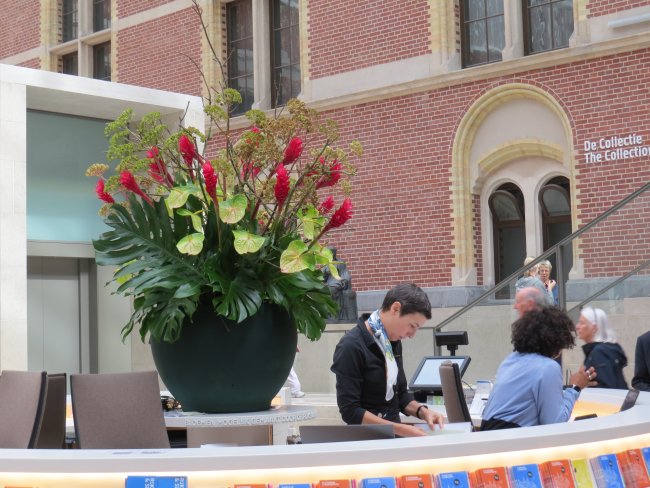
Lorena said that The Night Watch might have been Rembrandt's attempt to make a political statement about an assassination. I don't remember the details. She also described some the work to restore and understand the huge painting. X-rays and other high-tech methods had been deployed. Some of the work was still ongoing at the time of our visit.
We were scheduled to have a chance to explore other parts of the museum, but there was no time for it. After viewing Rembrandt's paintings both groups took the elevator down to the atrium for another potty break. We then took the elevator back up to the ground level. Some musicians serenaded us in the passageway.
We then walked a few blocks together to the spot where we met up with Ben, the operator of the boat on which we were scheduled to cruise the canal.
The canal cruise: The lady with mobility problems had quite a bit of difficulty in boarding the boat. The whole thing was pretty weird. We kept our QuietVoxes on, but both guides gave different play-by-play descriptions as we cruised by various noteworthy buildings. I always heard Lorena in my left ear, but—depending on where he was standing—I sometimes heard Bert just as clearly in my right ear.
The captain's name was Ben. His boat probably had a name, too, but I did not take note of it. There were plenty of chairs for our two groups as well as a few small tables. I made the mistake of sitting in a chair in an area that was mostly populated by Bert's group.
I should have take a photo of the boat, but I somehow neglected this responsibility.
Amsterdam had a vast network of canals. We were assured that, unlike those in Venice, they were all clean.
The canal tour was definitely more relaxing than Friday's walking tour, but it was more difficult to take photos of buildings. I was also just as disoriented in the water as I had been on the sidewalks.
We could not see the monument, but I took a photo of the sign. Lorena provided some of the same information about the nature of houses in Old Town as Julia had the previous day. I wondered if the houseboats had indoor toilets.
I fantasized about living on a houseboat. I could think of a lot of things that I would not like.
The ride was very comfortable, but it was a nuisance when the object of interest was on the other side of the boat.
The most interesting occurrence from a nautical perspective was when another boat needed several tries to pass under a bridge without scraping above or below.
If I could do the cruise over, I would turn on my recorder in my pocket and place the earpiece from the QuietVox next to it. I could then listen to Bert's commentary and play back Lorena's later.
Those people wearing shorts in the third photo above must have been cold, except maybe the pair by the lamppost who are spooning. It was chilly and damp all day long. I wore a light jacket in the boat.
I think that everyone in both groups was ready for the cruise to end.
The boat stopped in front of the Hard Rock Hotel, and we all climbed out. A couple of people had to lift the lady in the denim jacket up to the pavement. I cannot imagine what it would have been like to accompany her on a long cruise.It was a short walk from there to our luncheon restaurant, De Blauwe Hollander, which means The Blue Dutchman.
Lunch and the Museum Van Loon tour: The route from the Hard Rock Hotel to De Blauwe Hollander took us across one the liveliest places in the city, Leidseplein. It was midday on Saturday, and we had to dodge the tram and the cyclists.
I later learned that Leidseplein was one of the entertainment centers of Amsterdam. Although space is at an extreme premium in the Old Town, there was still construction going on.It was also very pleasant to walk up the narrow street on which the restaurant was located. I considered coming back to this area for supper or maybe for lunch on Sunday. The restaurants were plentiful and the menus were quite diverse.De Blauwe Hollander seemed to be one of the nicest ones. We were seated at two tables near the door. The people in Lorena's group sat together, but she did not sit with us. I sat at the end of the table that was near the aisle, not the wall.
The fare was good, but nothing spectacular. It consisted of a salad, a bitterballen (meatball) with mashed potatoes, and ten poffertjes (light bite-sized pancakes). I also had a beer.
No one sat across from me. On my left was a guy who had retired as an "imagineer" for Walt Disney in California. The guy across from him was from Pittsburgh. I was surprised to learn that they had both had Covid. The imagineer had recovered quite recently. The Pittsburgher had been hospitalized the previous fall with the Delta variant. They both seemed remarkably blasé about the fact that at the time the BA.2 variant was rampant in western Europe. They were a little surprised to learn that so many passengers had been forced to leave Viking Vili, but I got the impression that they felt that their previous illness had rendered them immune.Both were leaving on Sunday on different ships. The Pittsburgher was going to Budapest, following in the wake of the Viking Vili. The other fellow was headed up the Rhine to Basel. I explained that the route to Budapest required a left turn onto the Main River at Mainz. I also disclosed the large number of locks from that point on. He said that he had wondered why it took so many days to travel such a short distance.
I strongly recommended the Top of Cologne excursion, but they all seemed to be under the impression that it required climbing over 600 steps. I tried to explain that an elevator obviated the need for most of the climbing, but I don't think that they bought what I was selling.
After lunch we continued on the bustling Leidsekruisstraat until it ended at the Prinzengracht. We walked along that canal for a ways and then crossed over to the other side.
After a short walk we came to the Keizersgracht, which was the site of several seventeenth century mansions with quite plain facades, including that of the Van Loon (VAHN LONE) family.
The Van Loons were old money—really old money. Willem Van Loon was a co-founder of the Dutch East India Company in 1602. In 1884 the family bought the house at Keizergraft 672 as a wedding gift for Willem Hendrik van Loon and Thora van Loon-Egidus.
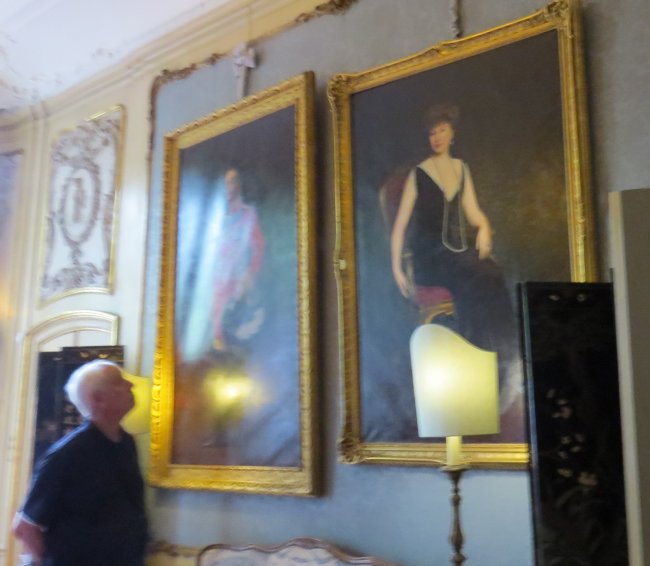
The house (and its adjoining neighbor) had been built in 1672 by Adriaan Dortsman. Its first resident was Ferdinand Bol, Rembrandt's most famous pupil. The façade had hardly changed in 350 years, but the interior was completely redone in the 1700's.
The incandescent lighting and the light from the windows made good photography very difficult.
My recollection, which may be wrong, is that the dishes on display were never used.
I struggled to get even a reasonable shot of the garden.
My eyes clouded over when pottery and jewelry were exhibited.
I don't know which room held the funky paintings in the images in the center and on the right.
The people who designed the interior were fanatical about symmetry. Although it was not feasible to line up the two doors, they made the red bedroom match the one across the hall by putting a fake door on the wall. Lorena demonstrated the real door next to the fake in the center image.
The Bird Room was used as a nursery and then a library. I don't know why they stuck a harp in there.
I think that the closet with hangers was in the kitchen. My other photos of the kitchen were not usable.
The garden was pleasant enough as long as the water stayed in the thick clouds above us. When the car for Mövenpick Hotel was announced, I needed to find Lorena to thank her for what was really a remarkable job. I have to admire the Europeans. I spent all day in Amsterdam with an art historian from Spain who spoke perfect English and seemed to have a real understanding and appreciation of the Dutch culture and art.
The ride back to the hotel almost began with a crash. Another car nearly backed into the Mercedes limo just as my driver started to pull out of his parking space. He took it in stride, but I exclaimed "My goodness!", which is Dutch for "Holy Shit!". He said that he often thought that he needed another two eyes.
Because most of the Old Town had been permanently closed off to motorized vehicles, it took about fifteen minutes to get to the hotel. Google Maps estimated that it would have taken ten minutes on a bicycle or thirty-seven minutes on foot.
After the excursion: My first stop in the hotel was at the Viking desk. Hana gave me the results of the Rapid Antigen test. I was not surprised to learn that I was negative.
Up in my room I had a pretty lengthy Google Meet with Sue. She said that it was predicted to be 98° on Sunday in New England. That would be much too hot for her. She would be playing at the bridge tournament in Marlborough, MA, and she had been able to put together a team for the Gold Rush Swiss.
I carried my laptop around so that she could see the hotel room and the fabulous view of the harbor.
Mostly we talked about how we would meet in Logan if my cellphone did not work. We settled on using email. I would sit in the lobby as close to the door as possible. I would be monitoring my email on my laptop using the free email connection in the airport. When she arrived, she would send me an email pinpointing where her car was parked.
After the Google Meet I decided to walk to Scheltema, the bookstore that I had located online the previous evening. The website said that they sold books in English, but it did not specify whether they had ten or ten thousand.
The route there was familiar to me, but I was astounded at how crowded the sidewalks were on Saturday evening. In some places there were so many people it was difficult to get through.I found the Damplatz without any difficulty. I made one wrong turn on the far side of the square, but I soon recovered and found Scheltema.
I entered the store. Just inside the door were two tables with stacks of English-language books. I almost immediately located a novel written by one of my favorite authors, T.C. Boyle. Talk to Me was about the attempts by some psychologists to train chimpanzees in American Sign Language. It sounded like something that would hold my interest, and it only cost €12.50. The clerk even threw in a bookmark. I had already read every book by Boyle in the Enfield library. I had also purchased a few of his works at Barnes & Noble, but I had never seen this one. I bought it.I could not believe my luck. I found a book that I wanted in record time for a reasonable price, and I was able to get rid of some euros.
My second objective was to get something for supper. I had passed a KFC restaurant on the way to the book store. I figured that I would stop in on the way back. However, when I arrived there, I changed my mind. The place was very crowded, and it used kiosks that were unfamiliar to me for placing orders. It just did not seem like a KFC. It was also nearly thirty minutes from the hotel; the meal would probably be cold by the time that I took my first bite. I did not even go in.
I was surprised to discover that Subway—as well as every other business near the hotel—was closed. It was 7:30 p.m. on a Saturday evening! I bought some potato chips and a Coke Zero from a machine in the hotel's lobby. I then went up to my room and consumed them with the other half of the Subway sandwich that I had purchased on Friday evening.
Afterwards I performed the same computer-oriented tasks that I had done every evening: uploading my photos and audio files to my laptop and recording notes about the day's activities in my journal documents.[2] Then I took a shower, read a chapter or so out of the new book, and fell asleep.
[1] I surmise that everyone there had purchased the excursion through Viking. The people who were already there had stayed in ships overnight. I don't know where the missing couple came from.
[2] I did a poor job at recording the notes. For example, my notes from the last stop of the Golden Age tour consisted of three words: "Van Loon mansion".


